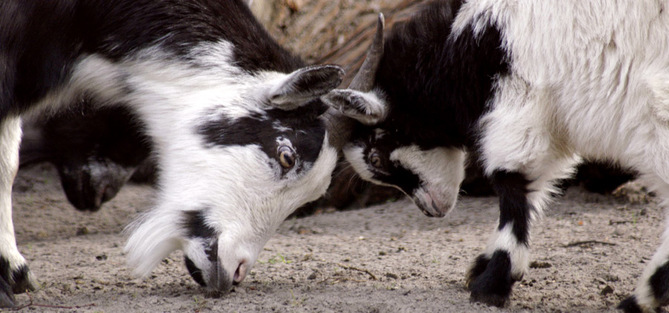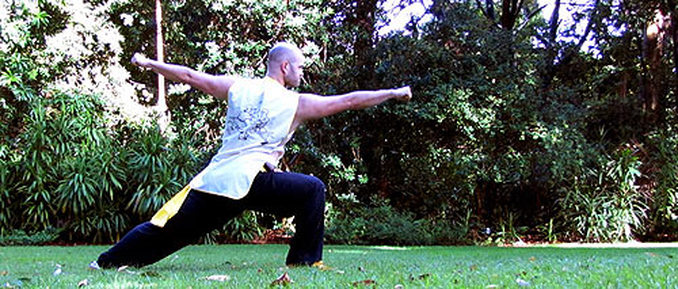|
Games have rules. But playtime is more flexible, organic. It naturally shifts and changes, but that doesn’t mean it exists without structure. It may be ambiguous, and difficult to pin down, but that’s also one of the things that makes it special.
I forget where I first came across the concept (might have been via Pop Up Playground), but what’s key for me in the difference between free play and a game as such, is that if it’s playtime the rules can and often do change at any time, you are free to quit whenever you like, and the point of the activity is the activity itself. Play exists for the purpose of playing, and only for as long as the process itself is engaging. At least, that’s my simplified definition for the purposes of my discussion, but this great article goes into more depth, describing play as “activity that is (1) self-chosen and self-directed; (2) intrinsically motivated; (3) guided by mental rules; (4) imaginative; and (5) conducted in an active, alert, but relatively non-stressed frame of mind.”
0 Comments
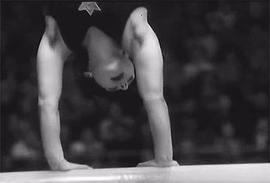 It amazes me how well coordinated we humans are. Even those of us who think we’re not. If I think about the animal kingdom, our dexterity and agility stands out, maybe because of our brains as well as our structure. Everything from typing to cooking to gymnastics to swimming. Maybe it’s our ability to learn contrived movement patterns. In a world without dance and gymnastics, who would think of doing these things? Who would look at a human being and think – I know, acrobatics! Cartwheels! Walking on our feet is too easy, we should walk on our hands! 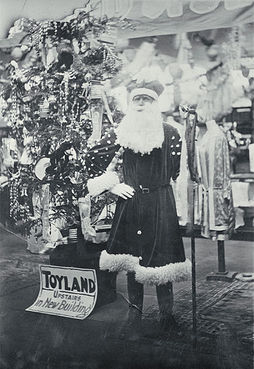 I’ve never written a post before on how to exercise after the holiday period. So here goes: with so much conflicting information out there, how do you train after Christmas? The same way you train the rest of the year. Do what you like, what’s appropriate and useful for you. If you train according to a program, or some sort of periodization scheme, do what is supposed to come next. If it’s the off-season for your favourite sport, train appropriately to your off-season. If you move intuitively, keep moving intuitively. If you dance, dance. If you run, run. It’s yours. And if it’s time to just take a break and not train, do that. Then, do whatever comes next. So pretty much – nothing new here. My same old tune. Even after Christmas. I was playing with our cat. She plays for the sake of the play itself – I love observing animals, they are unburdened by conception. They play when they have energy for play, and they rest when it’s right to rest. They don’t worry about their weight, or about effective movements or programs – when hunting, they naturally do what is most efficient or easy to complete the task, based on their target and their own physical makeup. All this happens intuitively, without conception, and so it is effortless and graceful, and sometimes hilarious. The pug jumps up the stairs because it is the best way for him to climb the stairs – she isn’t trying to be cute. I notice it quite profoundly – it’s easy to mistake simple for easy, and complex for difficult, but it often doesn’t work out that way in the end.
Chin-ups are essentially simple, yet quite difficult. Tai chi is extremely complex but it’s all about the elimination of tension within the body, so once you’ve grasped that physically, your practice becomes effortless. The thing is these days, if it’s effortless we think it won’t help us get into a smaller pair of pants, so why bother? Clearly it isn’t really about health anymore. Learning to move without tension is one of the most useful things in the world, as is learning to maximise tension. 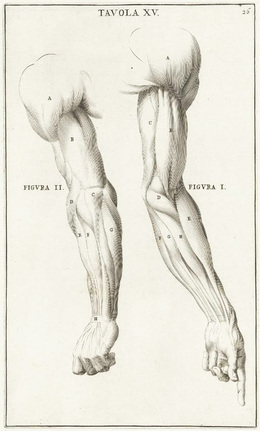 In strength training and fitness, everyone plateaus. I’ve had many conversations with individuals – when they’re stuck in a plateau they speak as if they’re doing something wrong, or as if the system has stopped working. They’re frustrated that their progress has stalled, or maybe they’re just looking for new ways to stimulate progress. But it happens to absolutely everyone. Not 95%. 100%. It’s what bodies do. And people don’t often talk about what’s good about the plateau, they just try to bust through them. This might work, or it might not, you might achieve success, or you might injure or burn yourself out. But plateaus can be protective, and your response can be forceful or patient. Many things might cause a plateau – overtraining, or being in the habit of not training hard enough – but people always think it is the latter. And it might be a systemic issue, or something pertaining to a muscle or an isolated area. Muscles adapt relatively quickly, in the scheme of things. They strengthen and they grow. But tendons and ligaments – your joints, so to speak – respond much more slowly. Training plateaus allow for your connective tissues to catch up with your muscles. Tendons connect your muscles to your bones, and ligaments keep your joints moving in the correct alignment. If your muscles are weaker than your tendons, this is a good thing. If the muscles were stronger, the tendons would pop. If the ligaments were not strong, the joint would move the wrong way. You don’t want your muscles out-powering your joints. People talk about training hard, or training smart, but to think of it in these ways is, I think, limited. It’s not about hardness. It might well be about dedication and commitment, and that includes effort, but this is different from working blindly and grinding yourself into the ground.
Athletic performance may be achieved by improving strength and fitness, pursuits which are generally associated with pushing oneself, but athletic performance can also be improved by improving mobility and efficiency. Typically, improvements in these areas are achieved without needing to violently strain, dominate or exert yourself. If you’re training for mobility or more efficient movement patterns, in reality the opposite is often true. If you work too hard beyond the point of fatigue, movement quality will start to break down, your fatigued muscles will stop moving smoothly, other muscles might try to take over, you’ll start to cheat the movement to achieve a result – in the end you’re only practicing poor movement patterns. And that won’t help. It will not set you up for success. 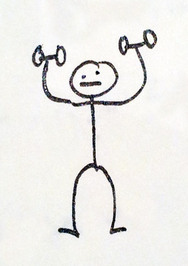 I have a shoulder problem. I’m always a little unsure how much I can do with it – I want to keep strong, and get stronger, and maintain my range of motion – which is to say, I want to improve my condition. I want the problem to resolve. I’ve been to my Osteopath, I know the exercises I’m supposed to do and what I’m supposed to avoid and all that – the boxes have all been ticked – but there’s always going to be this question mark – there’s always this aspect of needing to feel your way through. Some days, exercises I should be doing feel funky, uncoordinated or painful. Other days, exercises that I probably should steer clear of feel fine. And there are certain exercises that I’m supposed to do if they feel okay. And I often find myself coming back to these old programming ideas – I should be doing five sets of five reps, or I should train military press differently, train more scapular retraction, dumbbell rows, etc. I need to do this and this and that to maintain strength and range of motion and be strong. If you haven’t trained much at all in the last twenty years, or ever, starting a fitness program can be really daunting. It’s worth remembering, though, if health and longevity are important to you, you don’t need to rush it. Be patient. It’s the training itself that’s good for you; not some imagined result, it’s the process that improves your health, and also the process that can tax it, so there’s no need to hurry. If you’re working appropriately to where you are right now, today, in the context of your life, this is helpful.
It doesn’t matter if you’re not losing weight, when you’re exercising you’re still stimulating insulin sensitivity in your skeletal muscle. You’re still stimulating circulation to the brain, and all your vessels. You’re still exercising and improving the health of your heart and lungs. This idea that exercise “isn’t working” is a ruse. All exercise works, at something. What is it that you’re training? That’s what you’ll become good at. (Trigger warning: themes relating to violation and rape culture) In fitness and training and life, people talk about comfort zones. And how you need to push them, and strive, and force yourself to grow and you know what? Fuck that shit.
Comfort zones are fun. If you want to start exercising, and just get a feeling for what you are good at, what you enjoy, what your capacity actually is, your job is not to push your comfort zone. Your first job is only discovery. You can push it later, if you want – but you don’t have to. Pure movement is the pure expression of human emotion. It does not have to be forced. It can be exuberant, or subtle, wild and free, or structured and rationalised. All paths are valid. There is no point – there is nothing to be gained – by trying to push your boundaries before you even know where they are. Pushing your comfort zone, challenging those boundaries, smashing it at the gym before you’ve developed basic skills of movement, before you’ve got a sense of your capacity, that simply will not help you to progress. All that comes of that kind of approach is injury and if you’re after progress, that’s not how you get it. There is actually nothing to be learned by flailing wildly and trying as hard as you can, without awareness, without reflection, at some random exercise some dude told you about. If you seek progress, know your boundaries. They will surprise you again and again. God help me they will! Sometimes in a good way, and sometimes really not. But you do not need to blast them away – the more your understand yourself, the greater your capacity for growth. 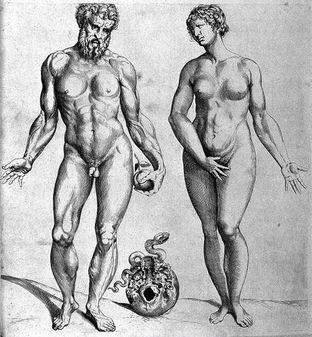 I read this great article the other day, and it reminded me that for many of us – when we are injured, and we go to the doctor, we are told that we should try to lose weight to keep pressure off our joints. It sounds good in theory, but in reality weight loss is not rehabilitation. We know that the dynamic interaction of gravity, weight and movement can create a great deal of pressure in our bodies. When running, the pressure your feet and joints have to negotiate can be around 300% of your body’s weight. I don’t mean to freak you out. The reality is this – if you weigh 100 kilograms and you manage to lose 10 – the difference in terms of stress applied to your joints? It’s negligible. We’re comparing 300 kilograms of impact forces to 270 kilograms. Losing weight will simply not give your joints the downtime you’re seeking. And if we consider further – protein isn’t just about rebuilding and repairing muscle after exercise. They talk about tissue repair in general fitness terms, but in reality – tissue repair is a pretty broad term, and it includes recovery from all kinds of injuries. Many people like to claim that it’s safe and achievable to shoot for a loss of up to 4 kilograms or 8 pounds in a month. If you’re losing weight at even half that rate, you’re ‘doing better’ than most, and frankly – for that to be possible, you’re most likely in a state of pretty serious dietary restriction. |
